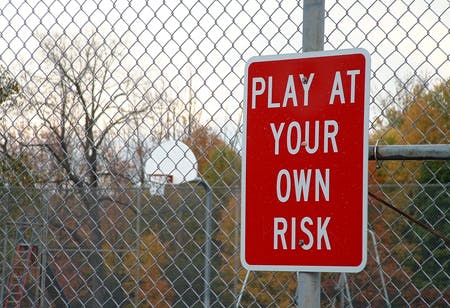The Good and Bad of Mikael backlund
By Kent Wilson
12 years agoI’ve done something like this already this season, but it’s time for another article praising Mikael Backlund.
It seems ridiculous on it’s face to sing the praises of a forward who has scored six points in 28 games this season. That’s about an 18-point pace over a full 82-game schedule, or approximately what Cory Sarich managed last year.
Bad Luck

Let’s tackle the lack of points first because no matter how useful a forward seems to be in other aspects of the game, he has to put up some offense in order to be anything more than a 4th liner in the NHL. Backlund’s point total is dreadful so far, but it’s almost entirely due to bad luck.
Misfortune is an unsatisfying, counter-intuitive explanation for just about anything, but there’s no way to get around the fact that Backs has been unlucky in 2011-12.
Consider: #11 has three goals on 68 shots on net. That’s a 4.3 SH%, less than half what you would expect a completely unremarkable forward to garner. Even Derek Smith (5.4) and Mark Giordano (7.3) have higher SH% this year. Backlund’s average shot distance at ES is 32.4 feet, which isn’t exactly close, but still not so outrageously outside that one would expect such a terrible goal rate.
In addition to Backund’s own struggles to bury pucks, his teammates have also been snakebitten this season. The Flames have an on-ice SH% of 4.57 with Backlund, just over half the league of average of around 8%. Unfortunately for Backs, the Flames goalies have also been sieves behind him at 5on5 as well with an on-ice SV% of 89.1% (league average is about 92).
Altogether, Backlund’s PDO (on-ice SV%+SH%) is 93.7. The league mean is 100 and most skaters percentages tend to regress towards that in the long run. To put that in context, a very unlucky season is usually in the 96-97 range. Only 15 forwards who played 40+ games last season ended up with a PDO below 96 last year.
Mikael’s PDO is the 17th lowest in the league amongst forwards with 20+ games under their belt this season. The hockey gods have him at the wrong of the distribution tail. That’s just the way it goes sometimes.
The Good Stuff
There will likely be suggestions that Backlund is somehow driving his poor percentages despite the fact that a vast majority of percentage movement in the NHL is variance. Another counter-point is the scoring chance evidence we have for Backlund so far this year also suggests good play but bad luck.
His scoring chance ratio is currently 52.7%. That means the Flames have outchanced the bad guys about 53% of the time with Backlund on the ice at ES this year. That’s one of the best chance percentages on the team.
In addition, Backlund has done the job in terms of driving possession. As noted by Rob Vollman in his recent Black Box article:
Backlund plays top-six minutes, just like Curtis Glencross, Olli Jokinen, Jarome Iginla, and Alex Tanguay. Despite playing in those tough situations the only player with whom the Flames have greater territorial advantage is Matt Stajan – and he plays exclusively against fourth lines, and usually in the offensive zone.
Backlund’s corsi rate – the differential of shots for and against with him on the ice – is +6.7/60 minutes of evn strength ice. Even more instructive is his relative corsi rate, which currently sits at a team best +15.0/60. That means the Flames shot differential is 15 more shots higher when Backlund is on the ice versus when he’s off of it this year.
That is especially notable because, as RV notes, Backlund isn’t playing against the lesser lights. For the first time in his young career, Backlund has started out more often in the defensive end and played top-six type opposition. Despite the uptick in difficulty, the puck has continued to travel in the right direction and spend more time in the offensive zone for Backlund. Those are big arrows pointing in the right direction going forward.
The Risks

The risks of this dry spell for Backlund (and the organization) is his losing a roster spot and/or getting dealt. Even though NHL coaches and GM’s are more cognizant of the ups-and-downs of an NHL season than most fans, they still tend to follow the percentages, especially when the team as a whole is struggling. As a result, a good player may be benched or moved because his outlandishly poor counting numbers suggest he isn’t not worth a damn. And, to be fair, it’s hard to perceive a guy any other way when the puck just doesn’t go in whenever he’s on the ice (and, alternatively, seems to go in way too often at the other end).
But the data we have shows the kid is doing everything else well. And what we know about percentages is that they inevitably regress over the long-term. For further evidence of this, note that Backlund’s PDO in his first 23 games in the league, for instance, was 102.4 (a team high that year). And he is objectively a much better player now than he was then.
The Flames situation plus the perception of Backlund’s struggles puts him in the "part of a package trade" territory unfortunately. And while no player is untradable on the Flames these days, chances are Feaster would be selling low on an asset who is going to rebound hard at some point in the future. He’s the best forward prospect to come out of the Sutter era of drafting and could be a key cog as this team starts to rebuild.
So patience is the watchword when it comes to Mikael Backlund right now. If he keeps moving the puck in the right direction, things will inevitably improve for him.
Recent articles from Kent Wilson





